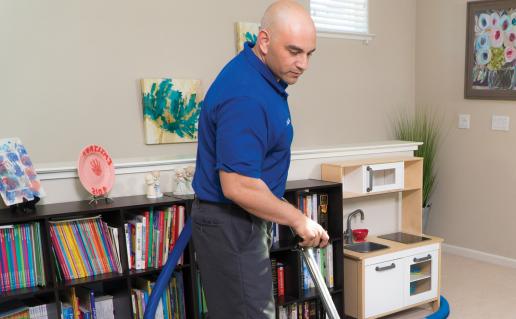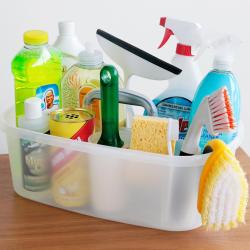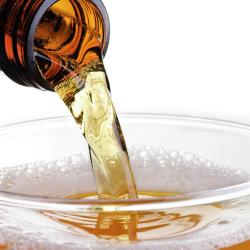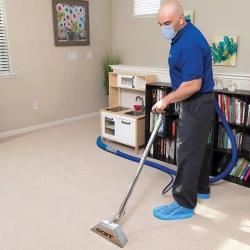COIT’s Guide on Bleach Stain Removal - History and Facts
Spilling bleach on your carpet doesn’t have to be a total disaster. If you’re wondering how to remove bleach stains, you’re not alone! Household bleach stains happen to the best of us.
The single most important thing to remember about bleach stains is the longer you leave it sitting, the higher the chance it will discolor your carpet. So act fast!
With COIT’s step-by-step guide, you’ll have a few solutions to use on your carpet when you’re wondering how to get bleach stains out.
Ever wondered what exactly is in bleach? Let’s check it out.
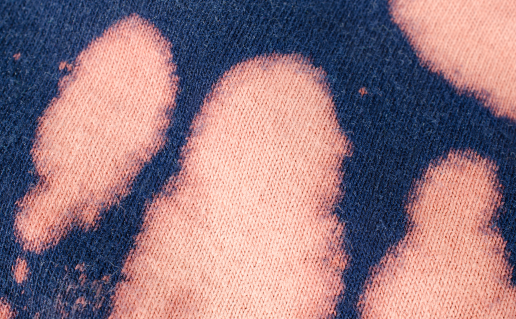
Chemical Composition of Bleach
Bleach is most commonly used to disinfect, remove stains and whiten clothes. When you look beyond its purpose and look at the chemical components of bleach, you’ll see that chlorine is actually the basis. Chlorine bleach usually contains calcium hypochlorite, whereas oxygen bleach contains hydrogen peroxide.
How Does Bleach Work?
When you’re using bleach to whiten your clothes or disinfect an area of your home, chances are you don’t often think about what is happening from a chemical perspective. So what’s actually going on when you use bleach?
Oxidizing Bleach
When applied onto a surface, oxidizing bleach breaks the chemical bonds of the part of the molecule that has color – this is also known as the chromophore. As a result of this chemical reaction, the molecule does one of two things: it begins to reflect a color that’s outside the visible spectrum or it has no color.
Reducing Bleach
If you’re working with reducing bleach, the kind of chemical reaction that happens is slightly different. Chemically speaking, reducing bleach changes the double bonds into single bonds. As a result, the surface is colorless since the molecules optical properties have also been changed.
The History of Bleach
Now that you know a bit more about the chemical composition of bleach, let’s take a quick look at the history of bleach.
Rewind back to 5000 BC in Egypt. Egyptians knew a thing or two about bleaching, as they would purposely discolor linens by leaving them out in the sunlight for extended periods of time. Furthermore, they would mix wood ashes with water to create a substance called lye. Soaking linens in this substance would also lighten colors.
Fast forward to the 12th century AD in Holland, where the Dutch became very well known for their bleaching techniques. They actually added sour milk to lye to soften its effects!
This worked so well that all brown linens that were manufactured in Scotland were sent to Holland for bleaching, where they would soak and sun-dry the linen multiple times to whiten it – this could take up to 8 weeks!
• In the 16th century, 8 weeks was cut down considerably, as John Robuck began using diluted sulphuric acid in place of sour milk.
• In 1785, French scientist Claude Berthollet discovered that chlorine actually destroyed vegetable colors; he then introduced chlorine into the bleaching process.
• In 1799, Charles Tennant of Scotland discovered that when chloride lime was added to bleach, it produced the substance now known as bleaching powder.
Bleach Stain Removal Tips
Now you know a bit more about what bleach is made of and how it developed over centuries throughout the world. It’s easy to forget how far bleach has come since Egyptian times!
If you’re wondering how to get bleach stains out at home using a few do-it-yourself methods, check out COIT’s guide to bleach stain removal.
How to Remove Bleach from Carpet
COIT's Guide on How to Remove Bleach Stains from Carpet
Focused on doing laundry and accidentally spill bleach on your carpet? Though your first reaction may be “Oh no!!!” you’ll be relieved to know that there are a few ways you can tackle removing bleach stains from carpet on your own. Phew!
Take a look at COIT’s step-by-step guide for a few handy tips.
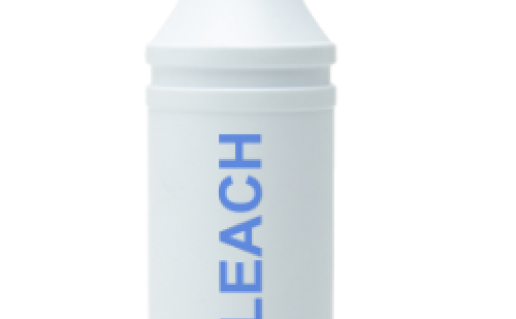
How to Get Bleach Out of Carpet – Method # 1
- As soon as you notice the bleach stain, immediately blot it with water and paper towel. Be careful not to scrub or rub the bleach, as this could worsen the stain.
- Mix ¼ tsp of mild dish soap with 1 cup of warm water.
- Pour the solution over the bleach stain and let sit for about 5 minutes.
- Once the stain has dried, rub it with a cloth or sponge, working from the outside in so you don’t spread the stain.
- Rinse with cold water and dry.
Up to 50% off Residential cleaning services - Find discounts in your area!
How to Get Bleach Out of Carpet – Method # 2
- Mix 4 cups of warm water with 2 tbsp of white vinegar.
- Pour this solution over the stained area of your carpet.
- After letting it soak into the stain for about 5 minutes, rub the stain with a cloth or sponge. The bleach stain should gradually start to disappear.
- If the bleach stain is still visible, repeat step 4 until it’s no longer there.
- Rinse the area with cold water. The vinegar smell should eventually disappear.
How to Remove Bleach Stains from Carpet – Method # 3
- Blot the affected area of the carpet with water and paper towel as soon as you discover the bleach stain.
- Find a crayon that closely matches the color of your carpet.
- Begin to color in the carpet fibers, making sure the color is absorbed.
- Take a wet towel and gently blend the color into the carpet.
Hopefully you’ll find that one of the above-mentioned bleach stain removal methods proves successful. If you’re still having a bit of trouble getting rid of that unsightly bleach stain, you do have another option: investing in professional carpet cleaning services.
COIT Professional Carpet Cleaning
The experts at COIT Professional Carpet Cleaning have been serving customers for over 65 years. Using the industry’s most advanced technology, our team of trained technicians can tackle tough stains to bring your carpet back to life. Don't forget to checkout our coupons!
Contact a COIT representative today to set up an appointment.
Remember to always do a spot removal test on a portion of carpet or upholstery that is normally not visible. These are suggested treatments only and COIT can't be held accountable for any damage sustained by use of the treatments in this spot removal guide.





